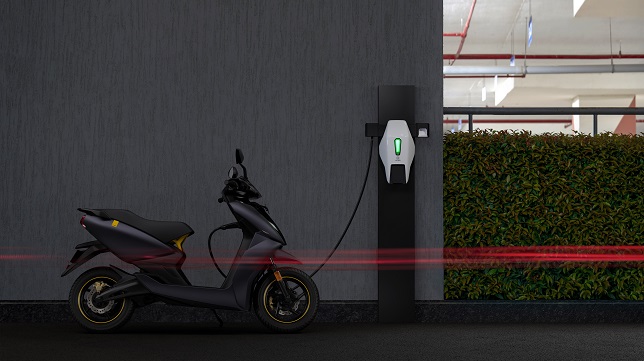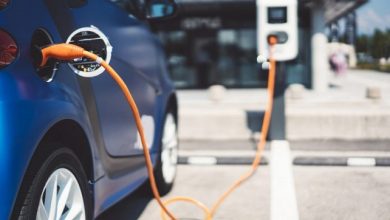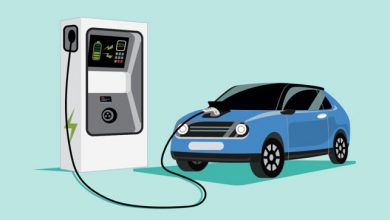Getting India “EV-ready” with electric fleet management solutions

According to the World health organization (WHO), India has the worst air quality index of all countries. Among rising environmental concerns, curbing the amount of vehicular exhaust is very important. Hence, getting India EV-ready is the next big goal of the Indian automotive industry.
EVs operate on an electric motor, thus eliminating the dependency on an internal combustion engine (ICE). It makes EVs one of the most practical alternatives to fuel-based vehicles. Truly, they play a significant role in lowering carbon footprints. But the switch from petrol-fueled fleets to electric fleets will not be easy. In recent years, the rapid development of charging infrastructure has led to a surge in EV sales. Consumers are being drawn to the exciting benefits of using EVs. Yet, EV manufacturers as well as users have a lot of loose knots to tie before EVs can be fully realized.
The EV market in India
The Indian electric vehicle market was valued at $1,434 billion in 2021 and is expected to reach $15,397 by the end of 2027. Two-wheelers (e-scooters and e-motorbikes) and three-wheelers (e-rickshaws) are currently dominating the EV market. Inter and intra-city public buses are also ripe for EV adoption. Several urbanized states of India, like Maharashtra and Delhi, have seen high EV penetration rates. These states also lead in electric three-wheelers and four-wheeler sales.
The high cost of ownership is one of the many barriers to EV adoption.To overcome it, the Government of India (GOI) subsidized e-rickshaws and 2-wheelers in low-income cities. In 2019, the GOI issued a budget of 10,000 crores INR to promote EV deployment and manufacturing. The central government also launched the FAME (Faster Adoption and Manufacturing of EVs) plan to encourage the use of EVs. Over 2,700 charging stations were installed all over India under the FAME II phase in 2019.
Impact on Indian consumers
Clearly, the Indian EV market promises growth and expansion. However, before pulling the plug on fuel-powered cars, we need to build a sustainable EV environment for the consumers. Being EV-ready means being able to plan effective routes and perform proactive maintenance. Electric fleet managers need tools to check on driving patterns to maximize utility. The inability to do so can pose an obstacle for consumers. For instance, not being able to track the state of charge or battery health can lead to unwanted breakdowns. Thus, affecting the fleet productivity. Not to mention, it makes transport inconvenient and significantly affects the user experience.
Tracking metrics is crucial for smoother electric mobility
1. Battery Use and the State of Charge
When it comes to fleet electrification, most metrics are centered around battery usage. Batteries are the largest and the most important component of your electric fleet. To optimize the performance of batteries, EV consumers need accurate analytics. They need tools to track EV charging and energy consumption patterns in real-time. They need a system to monitor battery health.
Imagine a fleet manager who has to look over 100 electric fleets. In this case, checking the battery health of every fleet manually is time-consuming and tedious. And for a single fleet manager to do this every day is practically impossible. Hence, some level of software automation is certainly required here.
2. Thermal Management
The recent occurrences of electric scooters catching on fire have taught us anything, is to be extra careful with our EV batteries. Thermal management is crucial for electric fleets, especially when operating in torrid regions. Hence, knowing when your battery temperature spikes or drops is essential for driver safety. Without thermal management, businesses will face losses in the form of downtime and excessive repairs.
3. Range Anxiety
Optimizing daily trips is necessary for businesses that plan to use electric fleets over longer distances. With electric fleets, they no longer need to care about fuel mileage. However, they will still need tools to plan effective trips. Designing routes that take charging infrastructure into account is the key to efficient mobility. Doing this will help fleet managers address range anxiety. On the plus side, planning optimum routes eliminate the need to charge EVs during peak business hours.
Tools for EV readiness
India is taking active steps to develop EV charging infrastructures. Companies like the Tata Group, Mahindra, and Kia motors are trying to perfect the production of electric fleets. Yet, all this will fall short if EV owners don’t get the tools to measure, track, and optimize electric mobility. Therefore, getting EVs connected to a digital platform is an inescapable part of fleet electrification.
Managing electric fleets manually will hamper India’s EV readiness. Besides, EV management solutions will not only enhance the performance but also aid the transition to electric fleets. Here is how they will do that:
1. Energy utilization history
Consumers will see how energy gets utilized by their electric fleets. Judge the efficiency of your EVs and obtain insights into optimizing energy usage.
2. EV charge and discharge reports
Get a detailed account of your electric fleet’s charging status. See how much time they need to charge completely. Optimize charge times and monitor charging cycles. Get notifications when an EV is fully charged and prevent overcharging. Get alerts for battery overheating and enhance fleet safety by unplugging immediately.
3. Timely insights
Receive notifications when your EV battery reaches a critical level and needs charging. You can define and customize the battery limit at which you would like to get notified. Get battery maintenance and servicing reminders to prolong battery life.
Conclusion
The need for an EV management solution is imperative. In fact, it may be as important as the electric fleets themselves. With the spike in petrol prices and the impending climate crisis, EVs are not just an eco-friendly choice but a necessity. But, for EVs to be an effective replacement, they need to be connected. User experiences can only be enhanced with OTA data and analytics. Until we build an analytics that supports consumer-related metrics, the switch to EV will feel like a distant dream.
References:
https://www.sciencedirect.com/science/article/pii/S2352484721003048
https://www.mordorintelligence.com/industry-reports/india-electric-vehicle-market
Author:

Tushar Bhagat
Director
Uffizio India Pvt. Ltd.
Tushar Bhagat is the CEO of Uffizio. He has simmered 15 years worth of informatics knowledge & experience into a one-of-a-kind telematics platform. This fleet management system has been acclaimed and widely used by businesses in over 60 countries. Mr. Bhagat firmly believes in finding creative solutions to everyday challenges—so businesses can bloom into their full potential.
Published in Telematics Wire



